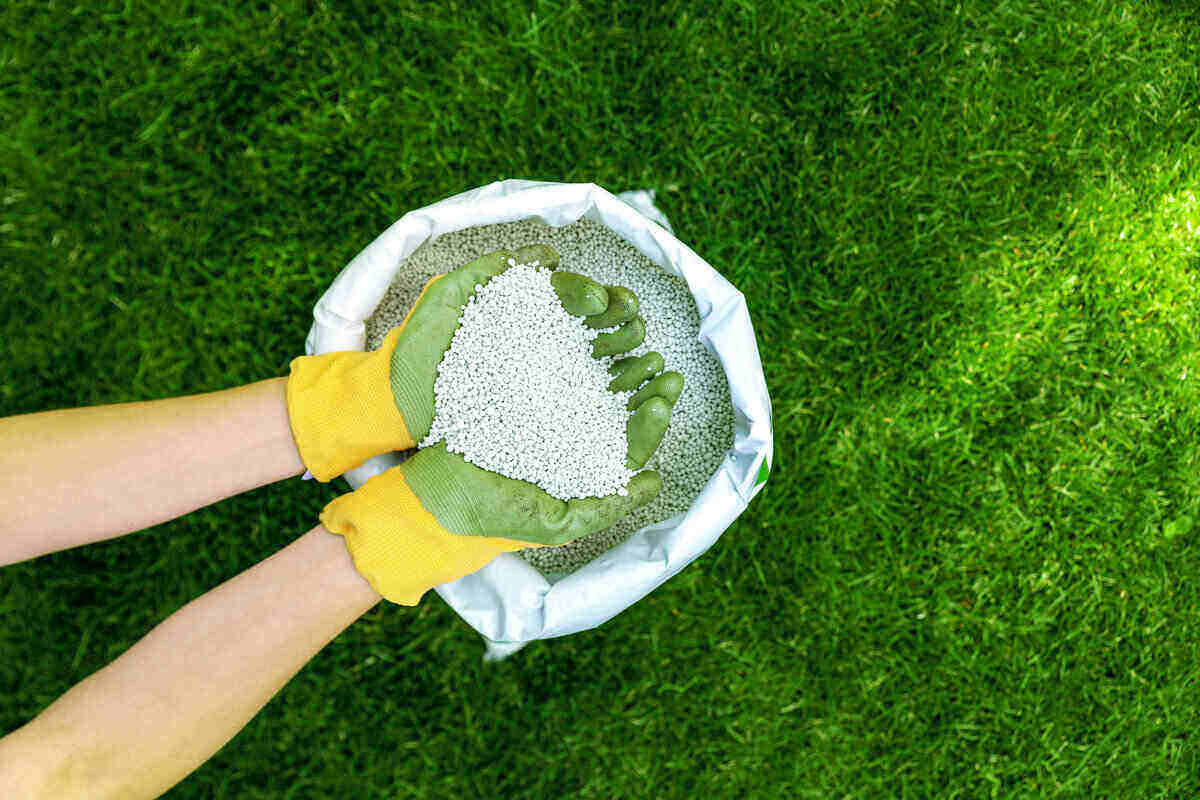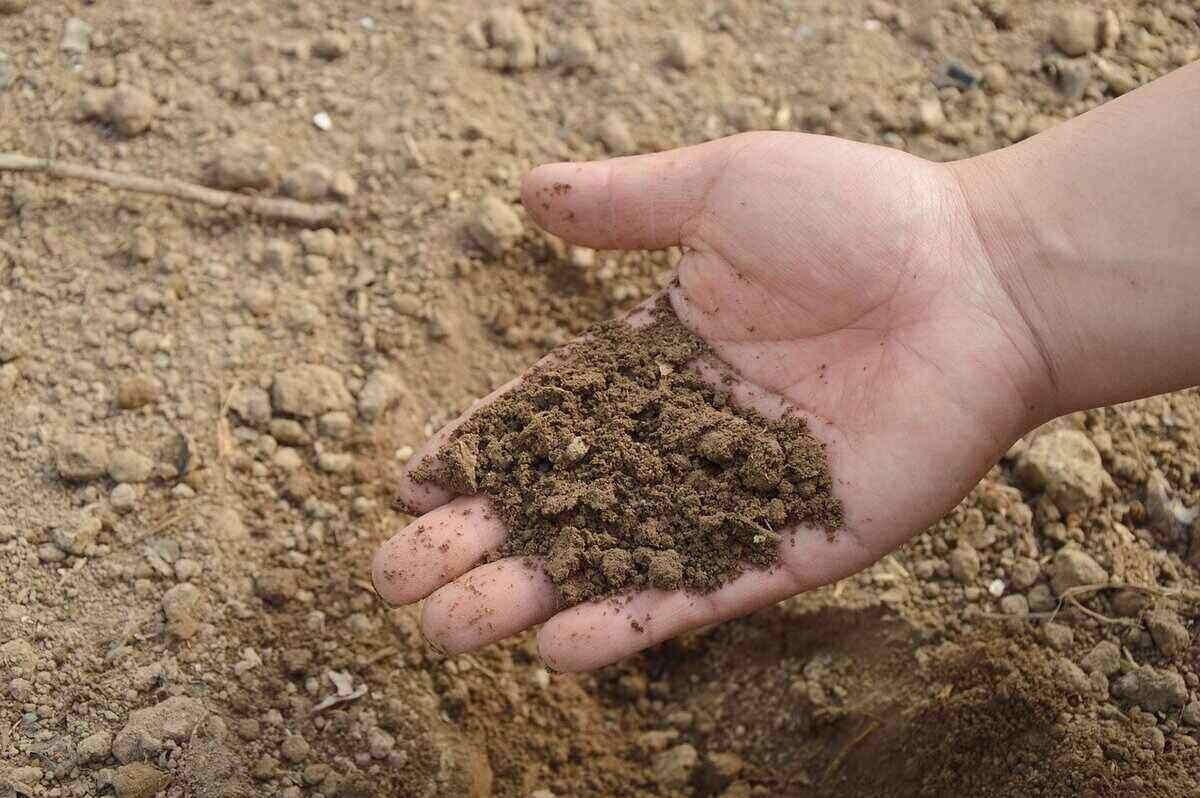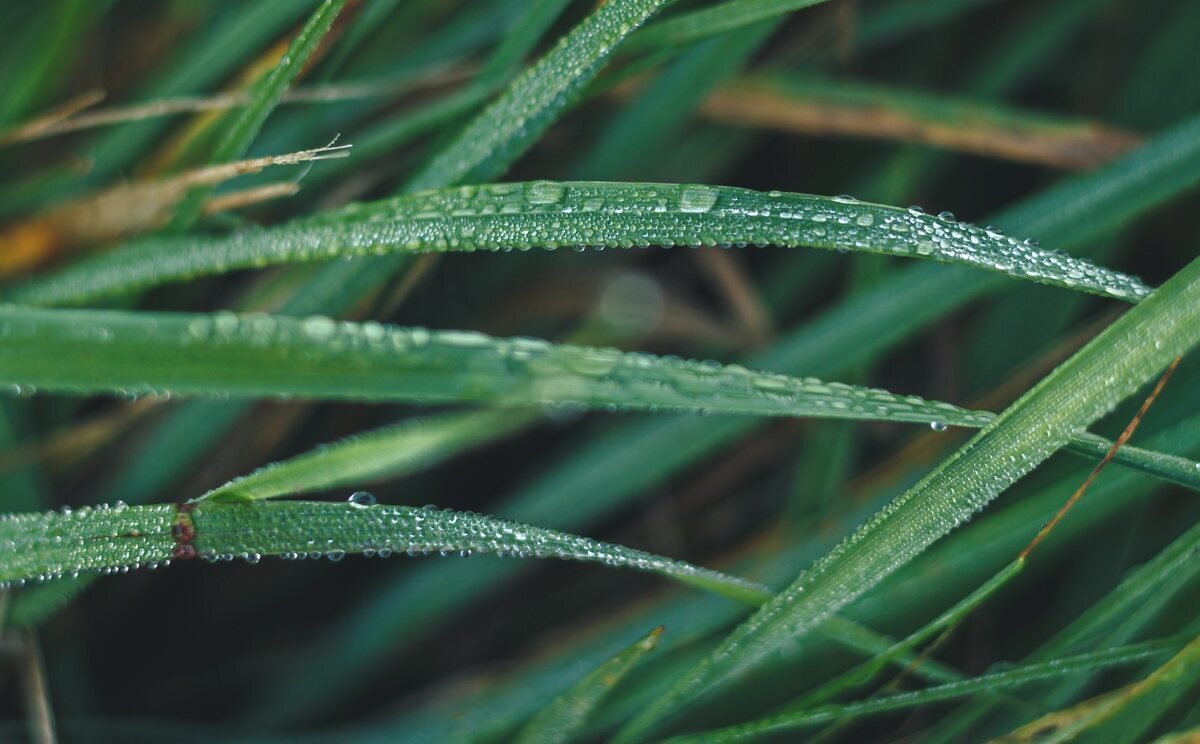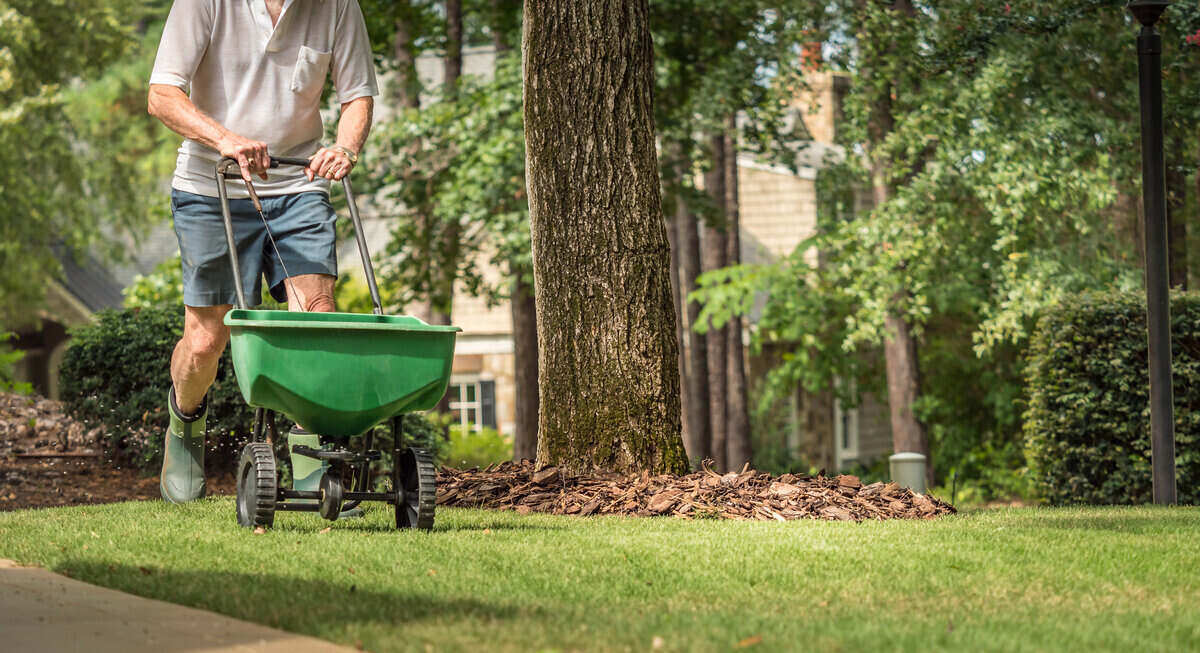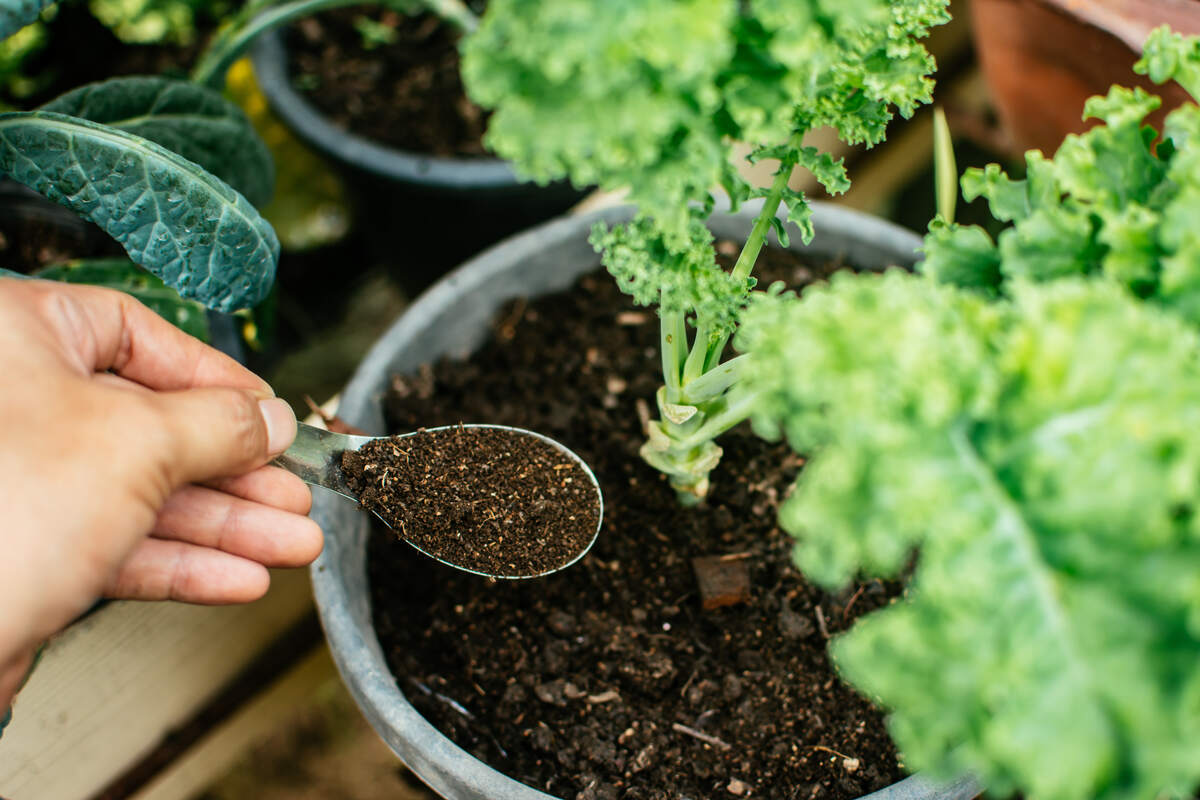
Organic fertilizers are nature’s food for the plants people strive to grow. Derived from plants and animal by-products, they boost plant growth and nourish the soil, developing a resilient ecosystem that can better withstand diseases and harsh weather.
Organic plant food is the best way to create more self-sustaining lawns and gardens that require fewer chemical treatments. To learn more about what organic fertilizer is and how it fits into a regular fertilizing routine, I talked with David Miller, an arborist and gardening expert at Austin Tree Services Tx in Austin, Texas, and Eduard Negodenko, a landscaping expert at Avanti Landscaping in Ontario, Canada.
Understanding Organic Fertilizer
Organic fertilizers are natural materials you can add to your lawn or garden to feed the plants with essential nutrients and improve the soil quality. Well-known examples are compost, humic acid, bone meal, kelp, and manure.
These natural growth enhancers are made from plants, manure, animal by-products, mined minerals, or a mixture of these materials. Unlike synthetic fertilizers, organic products undergo minimal processing and work with soil microorganisms to nourish plants sustainably.
Food for Your Plants
What is fertilizer if not food for your plants? And according to Miller, the organic type is the healthier, better food to go for. “Think of it like eating whole foods instead of processed meals — the long-term benefits are undeniable.”
Organic fertilizers improve soil quality and feed beneficial fungi and bacteria, while synthetic fertilizers damage the soil structure and harm the microbiome.
Unlike conventional fertilizers, which contain soluble nutrients such as ammonium sulfate or urea and are quickly absorbed by plants, organic fertilizers work more slowly. They provide long-term balanced feeding without the risk of fertilizer burn or forced growth.
Organic fertilizers also contain a wider range of nutrients, including:
- Secondary macronutrients (calcium, magnesium, and sulfur)
- Micronutrients (e.g., iron, copper, and zinc).
Their complex structure prevents and treats subtle soil deficiencies that are often hard to detect.
On the downside, they’re bulkier and contain lower concentrations of nitrogen, phosphorus, and potassium than conventional fertilizers. For example, blood meal, one of the highest in nitrogen, has a 12-0-0 NPK ratio (12% nitrogen), while chemical fertilizers can contain up to 40% nitrogen.
This means you’ll often need to apply a larger amount of organic product to achieve 1 pound of nitrogen per 1,000 square feet, a common application rate for turfgrasses. Hence, the price problem — organic fertilizers tend to be more expensive than conventional ones.
Pro Tip: Look for organic fertilizers made with local materials. They’re usually cheaper.
See Related:
How Organic Fertilizer Works
Unlike synthetic fertilizers, which supply nutrients in a water-soluble form that plants can quickly access, organic products must first be “processed” by soil microorganisms.

Organic fertilizers contain nutrients in their organic form (e.g., proteins) that plants can’t absorb. First, the natural soil factory needs to decompose them into smaller pieces. Experts call this process mineralization. Here’s what happens:
- You spread organic fertilizer and mix it with the topsoil.
- Soil fungi and bacteria start decomposing the fertilizer.
- They convert the organic matter into basic elements plants can use (e.g. organic nitrogen into ammonium).
- Plants absorb the nutrients from the soil.
- Beneficial organisms also feed on nutrients and multiply.
One aspect Miller underlines is that weather plays an important part in how organic fertilizers behave and the results they provide. “Organic fertilizers depend on microbial activity in the soil to break down and release nutrients. When temperatures drop below 50 F, microbial activity slows down, making organic fertilizers less effective,” says Miller.
That’s why synthetic fertilizers, which “release nutrients regardless of temperature,” he notes, might be a better choice late in the season.
During the warm season, however, organic fertilizers are exactly what you need. “In hot summer conditions, synthetics can be tricky — too much can burn the grass, while organics offer a gentler, slow-release option,” says Miller.
Benefits of Organic Fertilizer

Plants can’t tell if nutrients come from organic or chemical fertilizers. But the ecosystem they live in can. Organic fertilizers are the closest to Mother Nature’s way of keeping the life cycle going and have long-term benefits for the soil, plants, and the environment.
Soil Enhancement
Natural plant food offers benefits that extend beyond supporting the current season’s growth, according to Negodenko. “Organic fertilizers release nutrients slowly over time, feeding microbial life in the soil and improving its structure, water retention, and nutrient retention,” he says.
Natural fertilizers are rich in organic matter, which binds soil particles together into aggregates and gives the soil a crumbly structure — the telltale look of healthy, organic soils. Loose, crumbly soil has good drainage and aeration, allows the roots to grow deeper, and is better able to hold moisture and nutrients.
Organic matter is the main source of energy for soil microbes. When it’s plenty, they multiply and grow in diversity, creating a rich soil microbiome that helps plants access nutrients more easily and is less likely to be dominated by plant pathogens.
See Related:
Environmentally Safe
Organic fertilizers release nutrients more slowly than synthetic fertilizers, reducing the risk of runoff into waterways, rivers, and lakes.
That happens because organic fertilizers are less water-soluble — they don’t dissolve easily in water, as conventional fertilizers do. Instead, organic products rely on microbial activity to release nutrients in the soil and so are less prone to leaching during heavy rain or overwatering.
You can, however, pollute the environment if you accidentally drop fertilizer into a lake or a river or wash spilled fertilizer from your driveway into the waterways.
Long-Lasting Results
Repeated applications of organic fertilizers gradually turn the soil into a nutrient bank that can feed the plants for a long time.
Biological plant food adds organic matter to the soil, which acts like a sticky sponge for nutrients. Once microbes decompose the fertilizer into plant-available nutrients, what is not used by plants sticks to the organic matter instead of being washed away by irrigation or rain. It stays there until the plants need food again.
Negodenko says that is the opposite of the synthetic fertilizer effect. “While synthetic fertilizers can provide immediate “food” to a lawn, they only deplete the soil and create nutrient imbalances.” But most organic fertilizers are slow-release, providing nutrients for plants for several months after the application.
Common Types of Organic Fertilizer

There are two main types of organic fertilizers: plant-based and animal-based. This section discusses what each type of fertilizer provides and offers a few tips on choosing between the two.
Plant-Based Organic Fertilizers
Organic fertilizers made from plants are safer than animal-based fertilizers because they are free of worms, viruses, and other pathogens that sometimes end up in manures. If you’re choosing a product to fertilize edible plants, plant-derived fertilizer is a safer choice.
If you’re growing organic produce, look for certified organic fertilizers with the OMRI (Organic Materials Review Institute) label. Plant-based fertilizers can carry pesticide and herbicide residues if the plants used as raw material have been heavily treated.
| Organic Fertilizer | NPK Ratio | Best For | Nutrient-Release Time |
| Alfalfa pellets | 5-1-2 | General purpose | 1 to 4 months |
| Corn Gluten Meal | 10-0-0 | Turfgrass and leafy plants | 1 to 4 months |
| Cottonseed Meal | 3-1-1 | For acid-loving plants | 1 to 4 months |
| Kelp Meal | 2-1-3 | Micronutrient boost | Immediately to 1 month |
| Soybean Meal | 7-1-3 | Vegetable gardens and flower beds | 1 to 4 months |
These are general NPK values and will vary by product.
As you can see, most plant-derived organic fertilizers are low in nitrogen, so you might need to pair them with a product like a blood meal if you need a high-nitrogen source.
See Related:
- How Sea Kelp Fertilizer Helps Your Lawn
- Corn Gluten Meal: All Natural Weed and Feed?
- Fertilizer Numbers: What They Mean and How to Use Them
Animal-Based Organic Fertilizers
Animal-derived products are typically more concentrated in essential nutrients. They’re also more likely to be contaminated with pathogens. Make sure you buy from trusted sources.
| Organic Fertilizer | NPK Ratio | Best For | Nutrient-Release Time |
| Blood Meal | 10-1-0 | Turfgrass, leafy plants | 1 to 4 months |
| Bone Meal | 3-22-0 | Flowering plants, root growth | 1 to 4 months |
| Composted Chicken Manure | 0.5-0.3-0.5 | Enhancing soil structure | 1 to 4 months |
| Composted Cow Manure | 0.5-0.3-0.5 | Enhancing soil structure | 1 to 4 months |
| Feather Meal | 12-0-0 | High nitrogen requirements | 4+ months |
| Fish Meal | 10-6-2 | Fruit and vegetable crops, flowering plants, turfgrass | 1 to 4 months |
| Bat Guano (high in N) | 10-3-0 | High nitrogen requirements | 4+ months |
| Bat Guano (high in P) | 3-10-0 | Flowering plants, root growth | 4+ months |
These are general NPK values and will vary by product.
Fertilizers like fish meal, blood meal, or bone meal can release a strong scent that might invite dogs to dig in your yard, looking for the source of the animal smell. You might need to keep an eye on your pets for a few days after the application.
Mixed Organic Fertilizers

Two natural fertilizers can be classified as mixed organic fertilizers:
- Compost: Obtained from a mix of plant debris, food scraps, and manure to boost decomposition.
- Vermicompost: A mixture of decomposed plant waste, worm bedding, and worm castings.
| Organic Fertilizer | NPK Ratio | Best For | Nutrient-Release Time |
| Compost | 1-1-1 | Improving soil quality | 1 to 4 months |
| Vermicompost | 2-1.5-1.5 | Improving soil quality | 1 to 4 months |
See Related: How to Use Compost in Your Yard
Natural Minerals
Natural sources of minerals such as rock phosphate are also considered organic (clean, eco-friendly) fertilizers, although they are inorganic materials.
| Organic Fertilizer | NPK Ratio | Best For | Nutrient-Release Time |
| Rock Phosphate | 0-14-0 to 0-16-0 | Flowering plants | Years |
| Greensand | 0-0-3 | Vegetables, fruits, herbs, and flowers | Years |
Tips for Applying Organic Fertilizer
The results you’ll get from using an organic fertilizer depend on how well you pair it with your plants’ needs and when you fertilize the lawn or garden. Here are a few other tips for choosing the right product and getting the best out of the application:
- Test the soil. Fertilizers are more effective when they match the soil’s nutrient needs.
- Know your fertilizer. Some organic fertilizers (e.g., corn gluten meal and soybean meal) double as pre-emergent herbicides. Avoid using them for several weeks before seeding.
- Know your plants. Use blood meal or feather meal (rich in nitrogen) for turfgrass and bone meal (rich in phosphorus) for flowering plants that are about to bloom.
- Combine complementary fertilizers. Pair slow-release options with faster-release materials to ensure the lawn receives enough nitrogen (e.g. composted manure with blood meal).
- Use appropriate application rates. Some organic fertilizers, such as blood meal, can burn plant roots if overapplied.
- Dethatch or aerate the soil and mow before application so the fertilizer can reach the soil.
- Apply organic fertilizer when the soil temperature is between 70 and 95 degrees Fahrenheit to ensure soil microbes are active.
- Use a lawn spreader to ensure even distribution across your lawn or garden.
- Rake the fertilizer into the topsoil.
- Water appropriately. Moisture is essential for decomposition. Lightly irrigate after application to activate the soil microbes.
See Related:
- How to Test the Soil pH of Your Lawn
- Best Fertilizer Spreaders [Reviews]
- Common Fertilizer Mistakes to Avoid
FAQ
Yes, organic products usually have a more pronounced and unpleasant odor than inorganic alternatives, especially manure. The intensity depends on the type of organic fertilizer and the weather. Warm, humid weather speeds up decomposition: It will smell worse but go away faster.
Organic fertilizer is bulkier and has lower concentrations of nutrients which makes it more expensive per unit of nutrient. In other words, you’ll pay more for one pound of organic nitrogen than for one pound of synthetic nitrogen.
Depending on the type of organic fertilizer, it can take two to six weeks to see changes in plants (more intense color, growth). The soil starts to show visible improvements after one or two growing seasons.
Make Your Chemical-Free Lawn Dream Come True
LawnStarter pros know all the tips and secrets of using organic fertilizers to improve soil quality and grass health and resilience. Find a landscaping or lawn care pro near you and get your turfgrass on a healthy, organic food diet today.
Sources:
- Jones, C. (2023, June). Soil Fertility Considerations for Market Gardens. Montana State University. https://www.montana.edu/extension/montguides/montguidehtml/MT202305AG.html
- Mangan, F., Barker, A., Bodine, S., Borten, P. (2013, January). Compost Use and Soil Fertility. University of Massachusetts Amherst. https://ag.umass.edu/vegetable/fact-sheets/compost-use-soil-fertility
- Nunes, N. (2019, April 30). Role of Mineralization in Farming. California Department of Food and Agriculture. https://blogs.cdfa.ca.gov/FREP/index.php/role-of-mineralization-in-farming/
- Penhallegon, R. (2003). Nitrogen-Phosphorus-Potassium Values of Organic Fertilizers. Oregon State University Extension Service. https://www.stevenscountywa.gov/files/documents/XOSUN-P-KValuesofOrganicFertilizers1394061903040122PM.pdf.
- Timmerman, A., Adhikari, A., Dunaway, A., Parish, J., Hammett, B., Kuehny, J., Moreira, J. (2022, April). Composting Series: Worm Castings. https://www.lsuagcenter.com/articles/page1651169706312
Main Image Credit: Pornthep / Adobe Stock Free / License
